 Hello, gentle readers, and welcome to the RPG Reload, the weekly feature where we know the Prince of Cannock is a freeloader. Each week, we take a look at an RPG from the App Store’s past to see how it’s holding up in the here and now. It’s a chance to revisit old favorites, reflect on their place in the overall library, or simply to take a deeper dive than our reviews typically allow for. As the last descendent of the Kingdom of Midenhall, I try to choose a balanced plate of games to feature in this column, but if you have any suggestions, I’m happy to hear to them. You can leave suggestions in the comments below, post in the Official RPG Reload Club thread, or by tweeting me at @RPGReload. I prepare the schedule well in advance, so you might not see your suggested game soon, but it will be added to the master list.
Hello, gentle readers, and welcome to the RPG Reload, the weekly feature where we know the Prince of Cannock is a freeloader. Each week, we take a look at an RPG from the App Store’s past to see how it’s holding up in the here and now. It’s a chance to revisit old favorites, reflect on their place in the overall library, or simply to take a deeper dive than our reviews typically allow for. As the last descendent of the Kingdom of Midenhall, I try to choose a balanced plate of games to feature in this column, but if you have any suggestions, I’m happy to hear to them. You can leave suggestions in the comments below, post in the Official RPG Reload Club thread, or by tweeting me at @RPGReload. I prepare the schedule well in advance, so you might not see your suggested game soon, but it will be added to the master list.
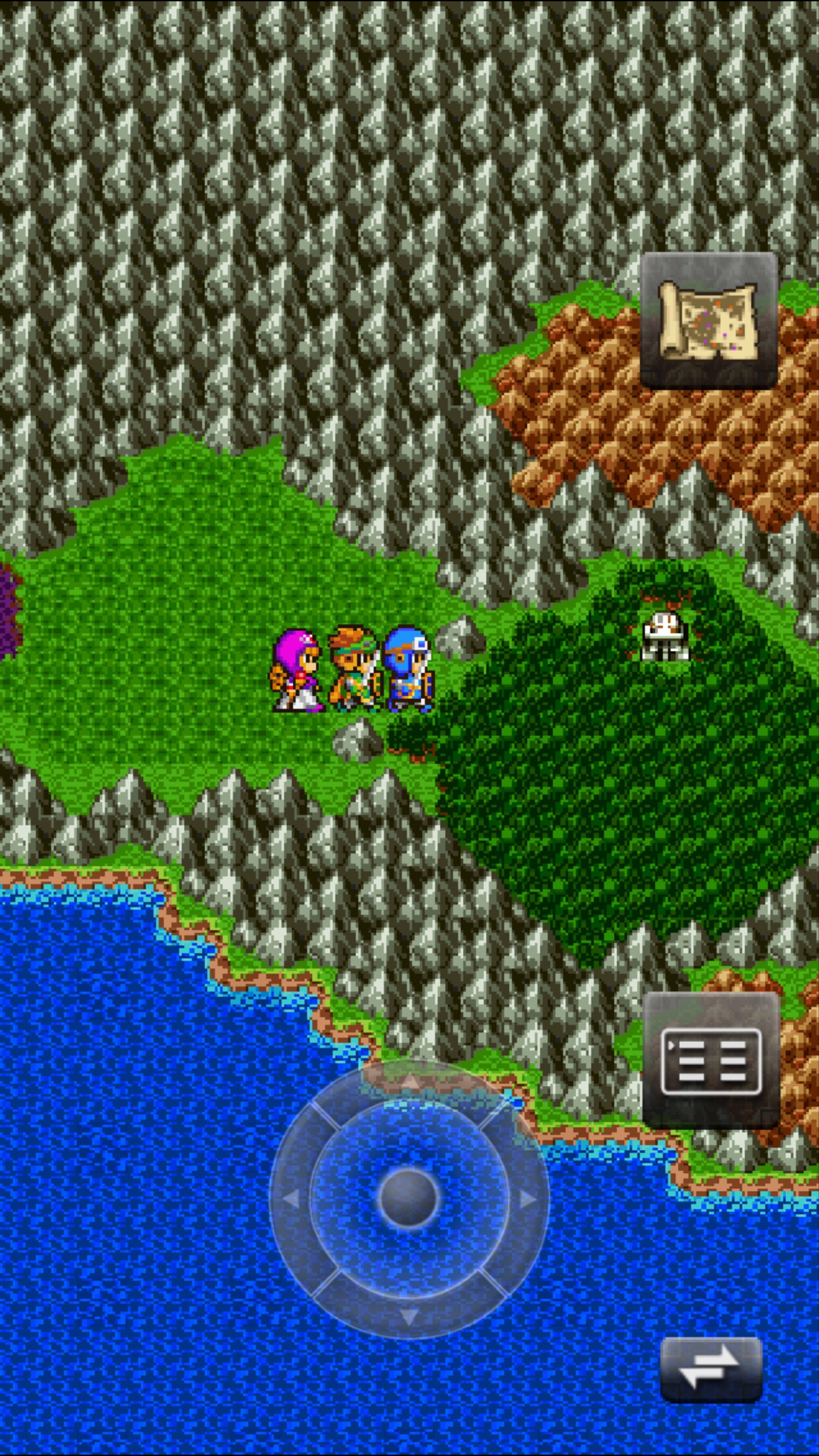
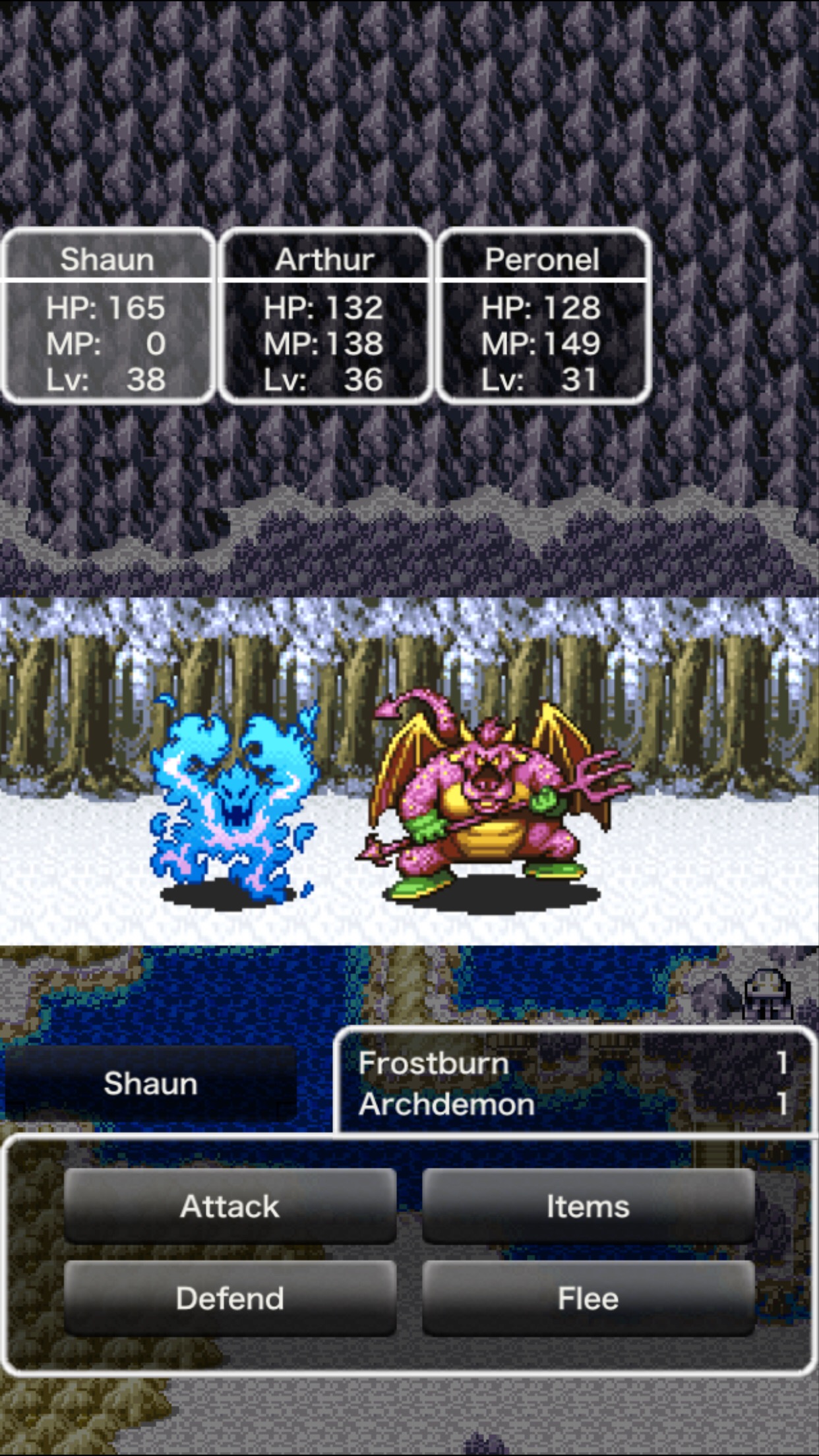
Okay, so confession time: I goofed up my schedule badly in the last week, which has had an impressive cascade effect on my plans. One is that this month’s episode of the RPG Reload Podcast is way behind schedule. Another is that the interview I had planned for this week is going to have to run next week instead. That necessitated an emergency replacement, which required me to juggle around my schedule for the next few months. A game I was planning to cover this month is getting kicked down the road a few months, and I found myself having to talk about an RPG without sufficient time to replay it in the week prior. There’s only one thing to do in a situation like this one, friends. That’s right, it’s a Dragon Quest surprise attack! Since I replay the Dragon Quest games regularly, they make good choices for cases just like this one. Thus, let us venture forth on this quest to re-examine a game that I’ve come to change my feelings on quite a bit since it first came out on mobile: Dragon Quest 2 ($4.99).
 It’s safe to say that after the eventual solid performance of the original Dragon Quest ($2.99) in the Japanese market that a sequel would surely be greenlit, but Enix actually had enough confidence in the game that the Dragon Quest team had already started planning the follow-up a month before Dragon Quest‘s May 1986 release. All the key players remained the same. Yuji Horii was in charge of the scenario design, Akira Toriyama served as the main artist, Koichi Sugiyama composed the soundtrack, and Chunsoft, led by Koichi Nakamura, did most of the coding work. Unbelievably, they hoped to have the game ready to go in November of 1986, which would have been less than half a year after the release of the first game. They missed that date, but only by a few months, with the game hitting the Famicom in late January of 1987. Interestingly, one of the reasons for the delay was that the game was deemed too difficult. Yes, the original 8-bit release of Dragon Quest 2 had had its difficulty toned down already.
It’s safe to say that after the eventual solid performance of the original Dragon Quest ($2.99) in the Japanese market that a sequel would surely be greenlit, but Enix actually had enough confidence in the game that the Dragon Quest team had already started planning the follow-up a month before Dragon Quest‘s May 1986 release. All the key players remained the same. Yuji Horii was in charge of the scenario design, Akira Toriyama served as the main artist, Koichi Sugiyama composed the soundtrack, and Chunsoft, led by Koichi Nakamura, did most of the coding work. Unbelievably, they hoped to have the game ready to go in November of 1986, which would have been less than half a year after the release of the first game. They missed that date, but only by a few months, with the game hitting the Famicom in late January of 1987. Interestingly, one of the reasons for the delay was that the game was deemed too difficult. Yes, the original 8-bit release of Dragon Quest 2 had had its difficulty toned down already.
If the goal of the first Dragon Quest was to give console players a simplified, approachable version of the PC RPG experience seen in games such as Wizardry and Ultima, the second game’s goal seems to have been to walk back that simplification a bit. One of the weakest aspects of the first game was its combat system. Battles were only ever one-on-one, and the hero had relatively few options during battles. This not only made battles somewhat boring, it also meant that beating the game involved nothing more than being at the right level and having a pinch of luck. The developers wanted to give players a party experience similar to Wizardry. They settled on a party of three characters due to the technical limitations of the Famicom hardware, which could only display a limited number of moving sprites in a line. Naturally, just as the player now had a party, so too could enemies form groups. The combination of these two things made battles far more interesting.
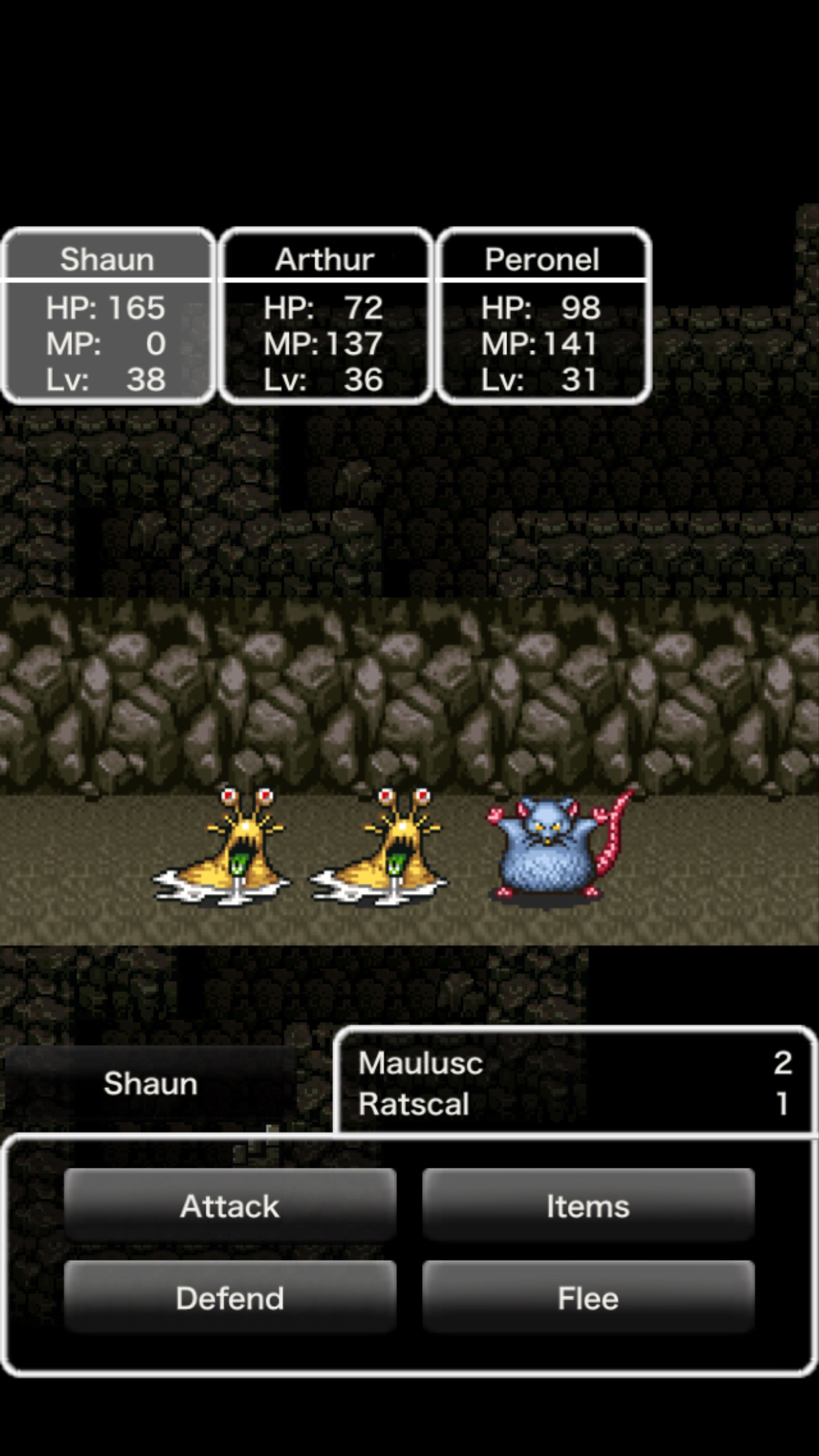 The hero of the game, the Prince of Midenhall, followed in the footsteps of the previous game’s hero by being a silent protagonist. The other two party members, however, have a number of spoken lines and possess basic personalities. In an interesting divergence from Wizardry, you didn’t have access to all of your party members at the beginning of the game. Instead, you only had the Prince of Midenhall. Most of the early hours of the game have you seeking out the Prince of Cannock and the Princess of Moonbrooke. It’s a clever way of easing Dragon Quest 1‘s players into the more complex mechanics of Dragon Quest 2. As in the original, you begin your quest alone, and unlike the previous hero, Midenhall isn’t good for much more than physically attacking enemies. Enemy groups around the starting area are limited to a maximum of three, so even that new element is kept from being overwhelming.
The hero of the game, the Prince of Midenhall, followed in the footsteps of the previous game’s hero by being a silent protagonist. The other two party members, however, have a number of spoken lines and possess basic personalities. In an interesting divergence from Wizardry, you didn’t have access to all of your party members at the beginning of the game. Instead, you only had the Prince of Midenhall. Most of the early hours of the game have you seeking out the Prince of Cannock and the Princess of Moonbrooke. It’s a clever way of easing Dragon Quest 1‘s players into the more complex mechanics of Dragon Quest 2. As in the original, you begin your quest alone, and unlike the previous hero, Midenhall isn’t good for much more than physically attacking enemies. Enemy groups around the starting area are limited to a maximum of three, so even that new element is kept from being overwhelming.
Each new character you gain forces you to learn new things. The Prince of Cannock can use some magic, but is weaker physically than Midenhall and has certain equipment restrictions. Most of his early spells mimic those of the character in the first Dragon Quest, so players can get used to a multi-character party while still operating within mostly familiar mechanics. The Princess of Moonbrooke is a powerful mage, but not much of a fighter. She gets some debuffing magic early on, another new element for players coming over from the first title. By this point, the enemy groups will have a chance to be quite large, which should encourage the player to make use of both magic-capable characters’ group attack spells.
 Not long after the whole party is assembled, players will come across another huge addition to the series. By solving a quest in a seaside town, the player is rewarded with a ship that they can use to travel anywhere in the world. In a fun surprise, one of the places you can go is the country where the original game took place. It’s been condensed a bit, and most of its points of interest have been removed, but it makes a clear statement about the size of the adventure in Dragon Quest 2 compared to that found in the original. And if you go poking around in familiar places, you will be rewarded in a variety of delightful ways. In general, Dragon Quest 2 both demands and rewards exploration to a far greater extent than the first game. It makes use of a few more hard gates to keep the player on track early on, but once those training wheels are off, they’re off for keeps.
Not long after the whole party is assembled, players will come across another huge addition to the series. By solving a quest in a seaside town, the player is rewarded with a ship that they can use to travel anywhere in the world. In a fun surprise, one of the places you can go is the country where the original game took place. It’s been condensed a bit, and most of its points of interest have been removed, but it makes a clear statement about the size of the adventure in Dragon Quest 2 compared to that found in the original. And if you go poking around in familiar places, you will be rewarded in a variety of delightful ways. In general, Dragon Quest 2 both demands and rewards exploration to a far greater extent than the first game. It makes use of a few more hard gates to keep the player on track early on, but once those training wheels are off, they’re off for keeps.
While the first game had had a slow start sales-wise, Dragon Quest 2 performed extremely well right out of the gate. It would go on to sell more than 2.4 million copies in Japan on the Famicom alone, and has had a number of successful remakes and re-releases on various systems to add to that total. Dragon Quest wouldn’t become a full-on cultural phenomenon in Japan until the third game, but Dragon Quest 2‘s reception in Japan was incredible. The only third-party games to outsell it in the Japanese Famicom market were its successors, Dragon Quest 3 ($9.99) and Dragon Quest 4 ($14.99). Thanks to its success, the future of the series was assured.
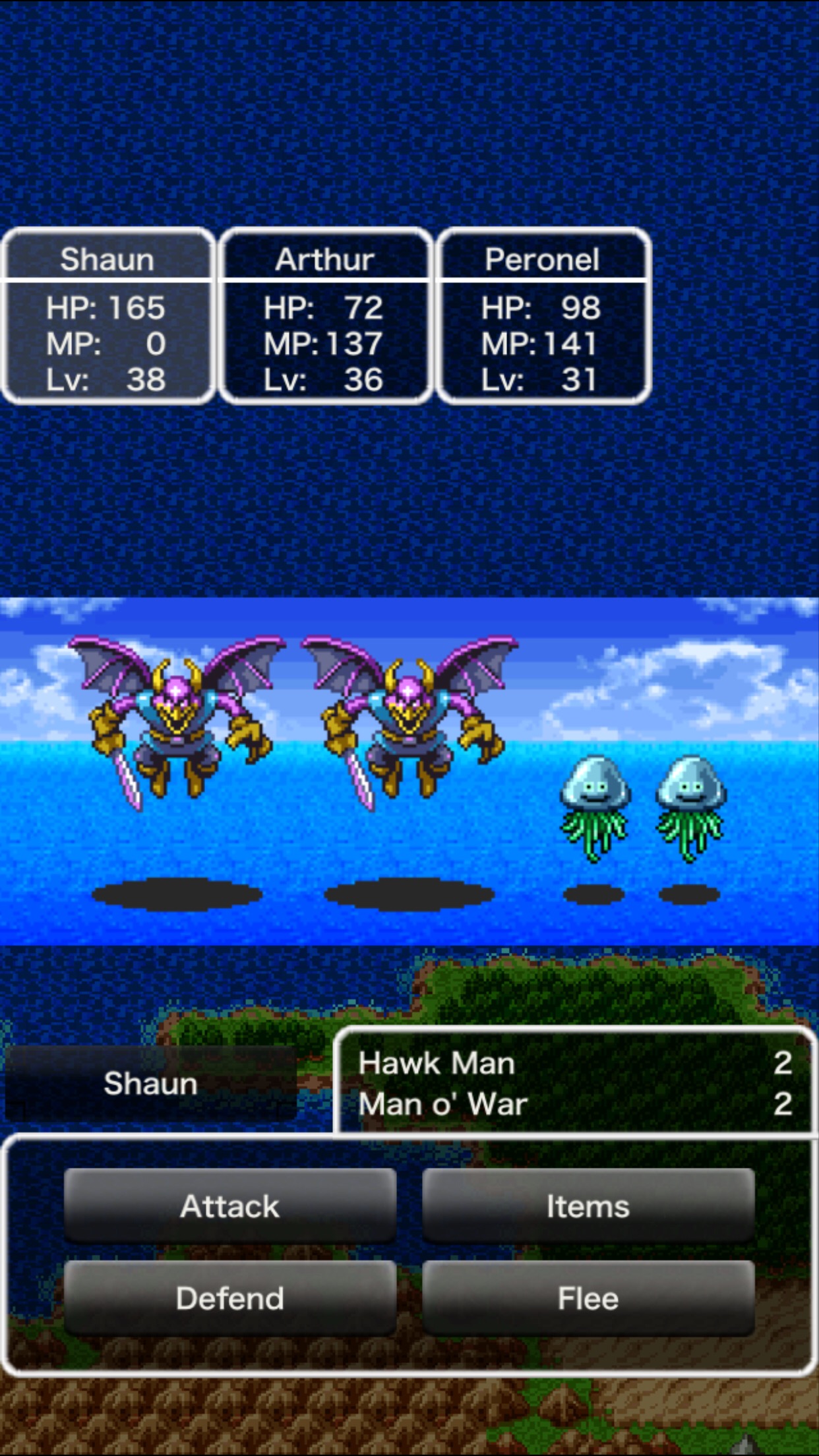 Naturally, it didn’t do nearly as well in North America. The late release of the first game by Nintendo had gone over like a lead balloon, leaving Enix to publish the second game on their own. As with the first game, Americans got to enjoy some enhancements over the original Japanese release, such as offering battery back-up instead of password saves, but those enhancements weren’t enough to overcome its relatively late release date in September of 1990. The NES was getting quite long in the tooth by that point. The SEGA Genesis and NEC TurboGraphx-16 had been out for a year in North America and were starting to hit their strides. Even among the Nintendo faithful, a lot of attention was on the upcoming 16-bit Super NES hardware. In the tiny English console RPG bubble, all eyes were on Final Fantasy ($7.99), the latest localization by Nintendo to try and give the genre a boot in the rear overseas.
Naturally, it didn’t do nearly as well in North America. The late release of the first game by Nintendo had gone over like a lead balloon, leaving Enix to publish the second game on their own. As with the first game, Americans got to enjoy some enhancements over the original Japanese release, such as offering battery back-up instead of password saves, but those enhancements weren’t enough to overcome its relatively late release date in September of 1990. The NES was getting quite long in the tooth by that point. The SEGA Genesis and NEC TurboGraphx-16 had been out for a year in North America and were starting to hit their strides. Even among the Nintendo faithful, a lot of attention was on the upcoming 16-bit Super NES hardware. In the tiny English console RPG bubble, all eyes were on Final Fantasy ($7.99), the latest localization by Nintendo to try and give the genre a boot in the rear overseas.
So it was that Dragon Quest 2 ran into essentially the same aggravating problem the first game had had in its international reach. It had to compete against the very games it had inspired, and that’s a tough battle to win. Still, it did well enough for Enix to carry on with localizations of the next two games in the series, even if it didn’t break out the way they might have hoped. Really, it’s a miracle it sold what it did in North America. Who’s going to find a party of three defined characters exciting when Final Fantasy offered four customizable ones? What good is a mere ship after you’ve tasted the joys of an airship? Even with its increased attention to story, it was easily outpaced by Final Fantasy‘s more robust narrative. Due to its late release, Dragon Quest 2 felt like a backwards step compared to its contemporaries.
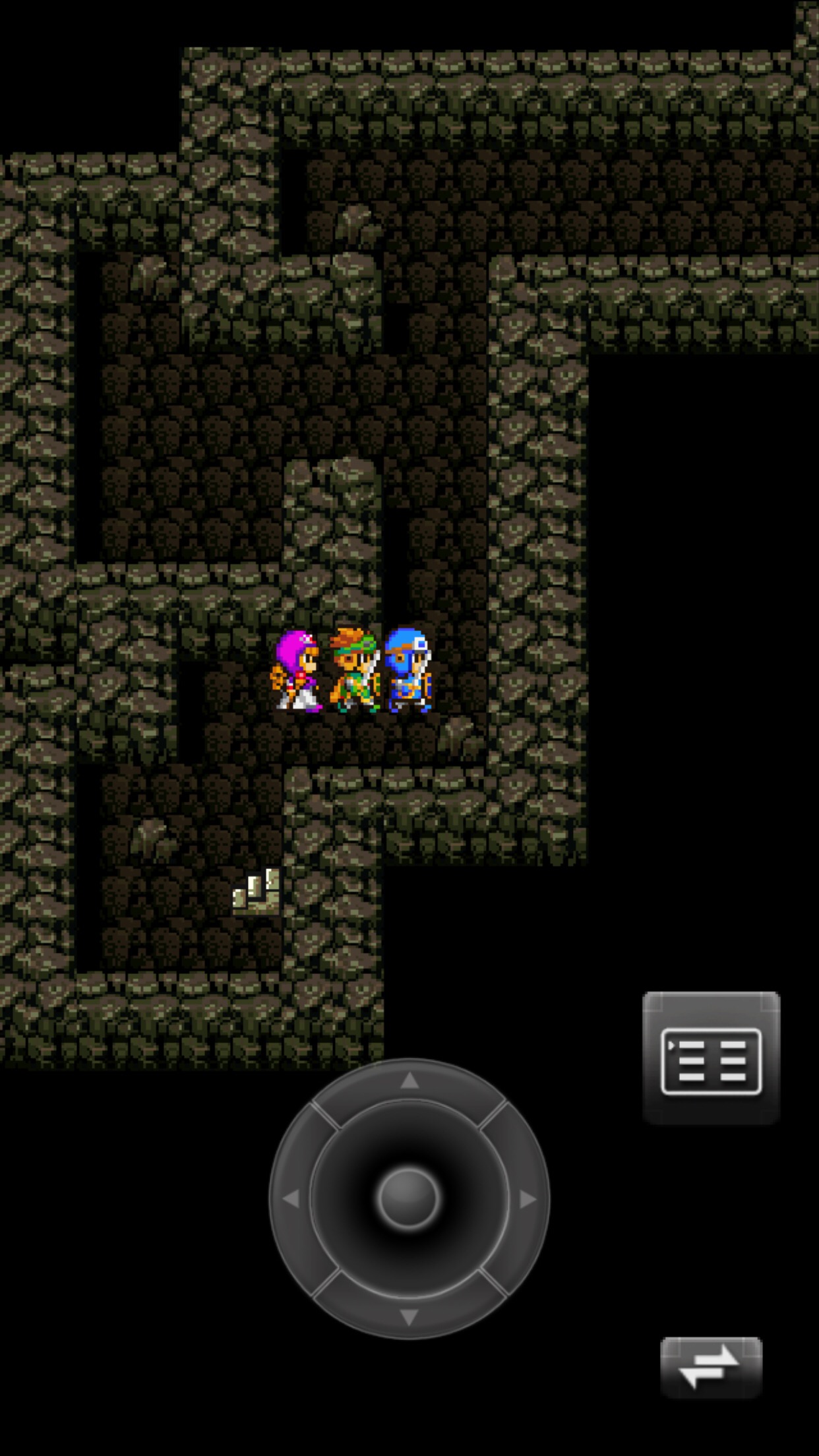 The players who bought in on Dragon Quest 2 found a great adventure, particularly if they were fans of the first game. Those that saw it through to the end would have to deal with its laborious endgame and ridiculous final boss, who could heal every last point of damage you had dealt with nothing more than a single spell. It was possible to make your way through one of the most dreadful dungeons of this era only to find you were missing an essential item, forcing you to trudge all the way back through to get it. Unlike many of the game’s other drawbacks, this was pretty irritating even by the standards of its time, and is one of the reasons why many Dragon Quest fans rank the second game quite low compared to the others.
The players who bought in on Dragon Quest 2 found a great adventure, particularly if they were fans of the first game. Those that saw it through to the end would have to deal with its laborious endgame and ridiculous final boss, who could heal every last point of damage you had dealt with nothing more than a single spell. It was possible to make your way through one of the most dreadful dungeons of this era only to find you were missing an essential item, forcing you to trudge all the way back through to get it. Unlike many of the game’s other drawbacks, this was pretty irritating even by the standards of its time, and is one of the reasons why many Dragon Quest fans rank the second game quite low compared to the others.
But Dragon Quest 2 today is not the Dragon Quest 2 of the Famicom era. It’s had a number of remakes and ports, and with each new release, a few dents are pounded out of the game. The grind was reduced in the Japan-only Super Famicom remake, and characters would auto-target another enemy if their original target was already dead. Stat-boosting seeds were sprinkled throughout the game, allowing players a small bit of customization. The Game Boy Color remake added a quick-save function to make it more suitable for handheld play. A new sub-quest was added where the Prince of Cannock gets cursed, and you can either restore him or just leave him to rot. The biggest change in the mobile version of the game was in making it so that the player could not pass through the Cave of Rhone without the necessary items to complete the game. It was one of the biggest dangling design issues remaining in the game, so it was great to see it addressed.
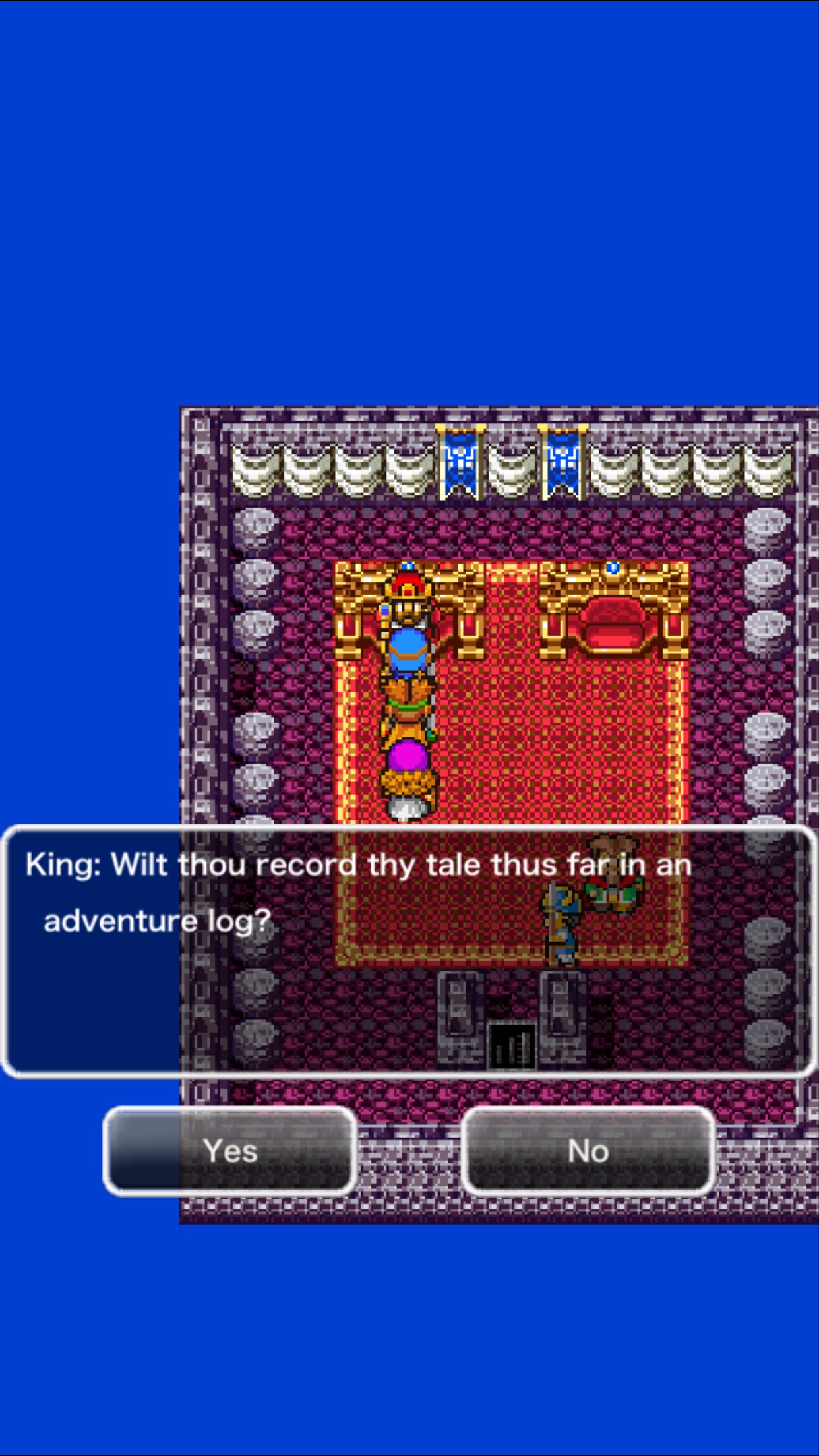 I used to be one of those Dragon Quest fans that felt this game wasn’t as good as most of the others. In fact, I used to consider it the worst game in the series. In the last couple of years, I’ve come to appreciate this game more, and I credit the mobile version for that. I used to dislike that it lacked both the pure simplicity of the first game and the satisfying complexity of the third game, but I now find that what I once thought was a weakness is now, to me, a strength. Dragon Quest 2 is big enough to feel like a grand adventure, but small enough in scope that it’s easily digested in small chunks. The second half of the game is probably still a little too aimless for its own good, but the few added hints and relatively small world map make it manageable. The final boss seems to have had his more vicious AI patterns jettisoned, making for a fairer and more enjoyable finale. And while the game doesn’t have much of a story to go on, the laughable uselessness of the Prince of Cannock never fails to amuse me.
I used to be one of those Dragon Quest fans that felt this game wasn’t as good as most of the others. In fact, I used to consider it the worst game in the series. In the last couple of years, I’ve come to appreciate this game more, and I credit the mobile version for that. I used to dislike that it lacked both the pure simplicity of the first game and the satisfying complexity of the third game, but I now find that what I once thought was a weakness is now, to me, a strength. Dragon Quest 2 is big enough to feel like a grand adventure, but small enough in scope that it’s easily digested in small chunks. The second half of the game is probably still a little too aimless for its own good, but the few added hints and relatively small world map make it manageable. The final boss seems to have had his more vicious AI patterns jettisoned, making for a fairer and more enjoyable finale. And while the game doesn’t have much of a story to go on, the laughable uselessness of the Prince of Cannock never fails to amuse me.
If I were to try to rank the series objectively, this still wouldn’t come in terribly high, but in terms of my personal enjoyment, I tend to feel like digging into Dragon Quest 2 more often than I used to. The refinements certainly help, but I also think that I’ve come to appreciate the game’s context more, too. A great deal of the basic structure of the Dragon Quest series was laid down here, and while it’s certainly in a rough form, I can’t help but admire how early on in the series its developers managed to nail that down. If you’re like me and you used to think poorly of Dragon Quest 2, give the mobile version a playthrough and try to see it with new eyes. It’s still as clunky in places as any 30 year old game is likely to be, but it’s far more enjoyable than it really ought to be this far down the line.
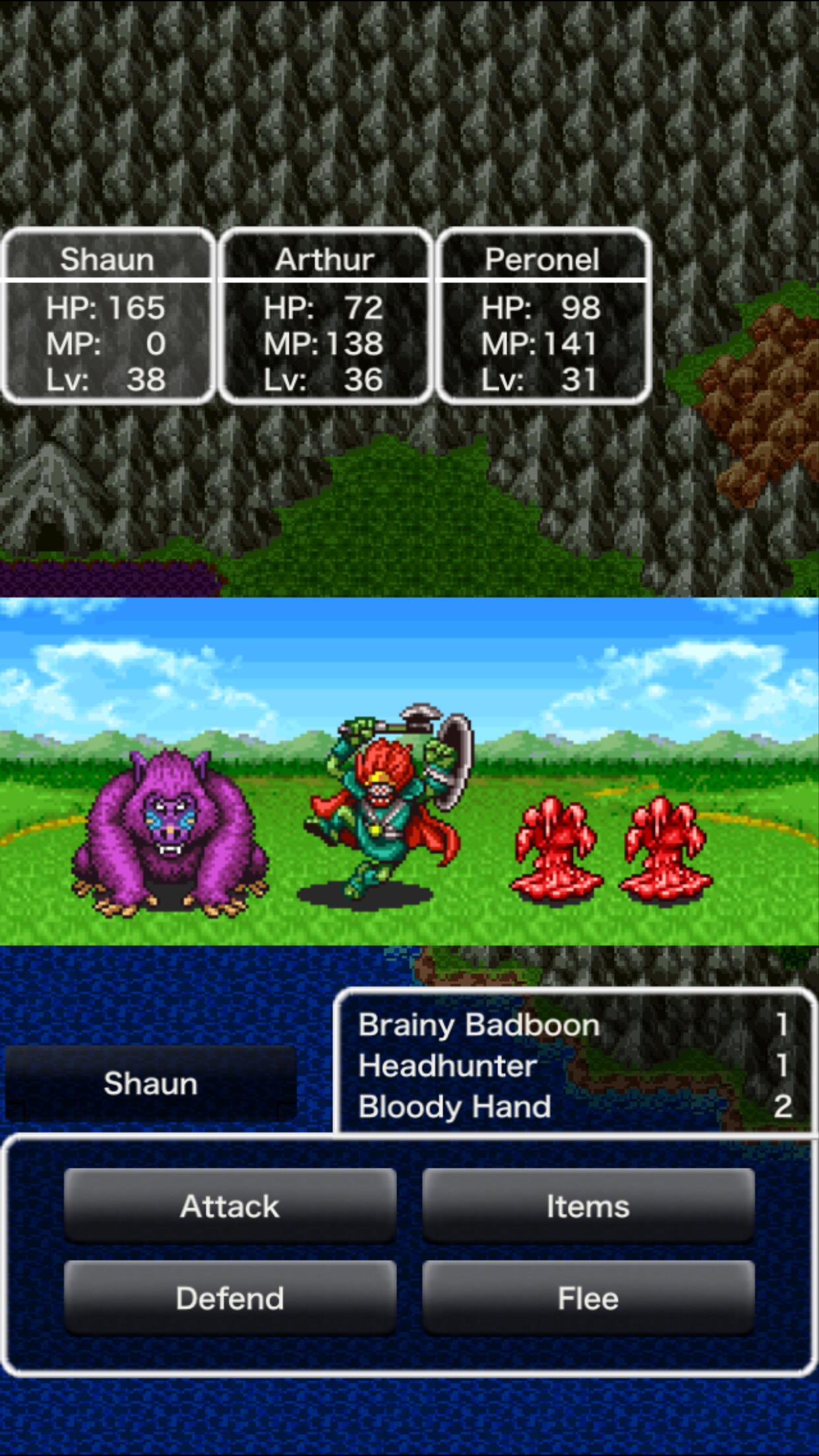

There’s just one problem, though, and it’s a big one. If you’re running the iOS version of Dragon Quest 2 on iOS 9 and up, there are some serious issues with the game. The sound effects don’t work at all, which is bad but not a game-breaker. No, the worst is that if you face off against a group of multiple enemies of the same type, the game will crash at the conclusion of the battle. This is the only Dragon Quest game with this bug, and it’s been around so long at this point that I wonder if Square Enix will ever bother to fix it. What’s truly baffling is that the game was updated in August of this year to add more languages, and the bug wasn’t fixed. Come on, now.
Anyway, aside from that (hopefully) temporary unpleasantness, that’s my take on Dragon Quest 2. What do you all think? Where do you rank this one in the series? I want to know, so please leave a comment below, post in the Official RPG Reload Club thread in the forums, or tweet me at @RPGReload. As for me, I’ll be back next week with that interview I promised. This time for sure. Thanks for reading!
Next Week’s Reload: No really, interview time!